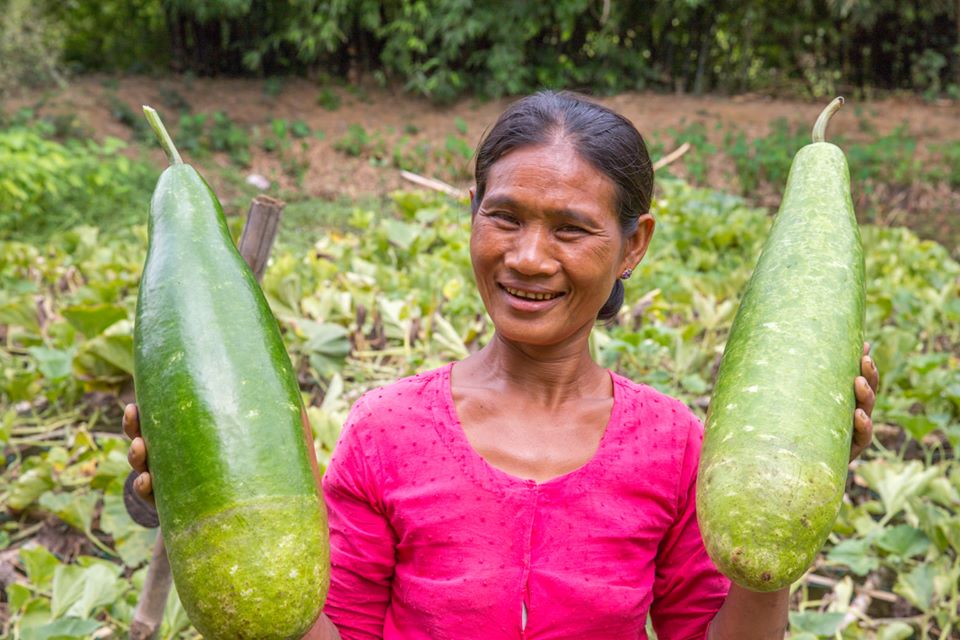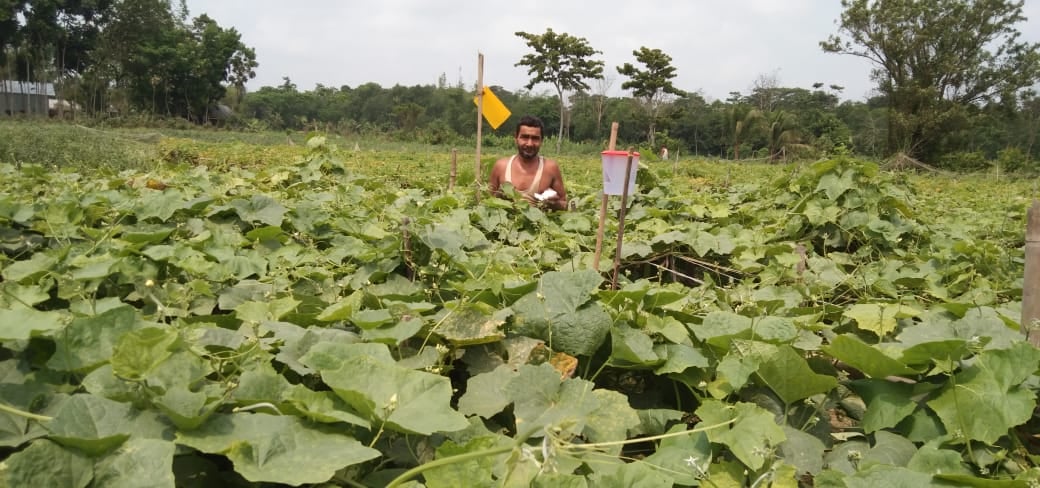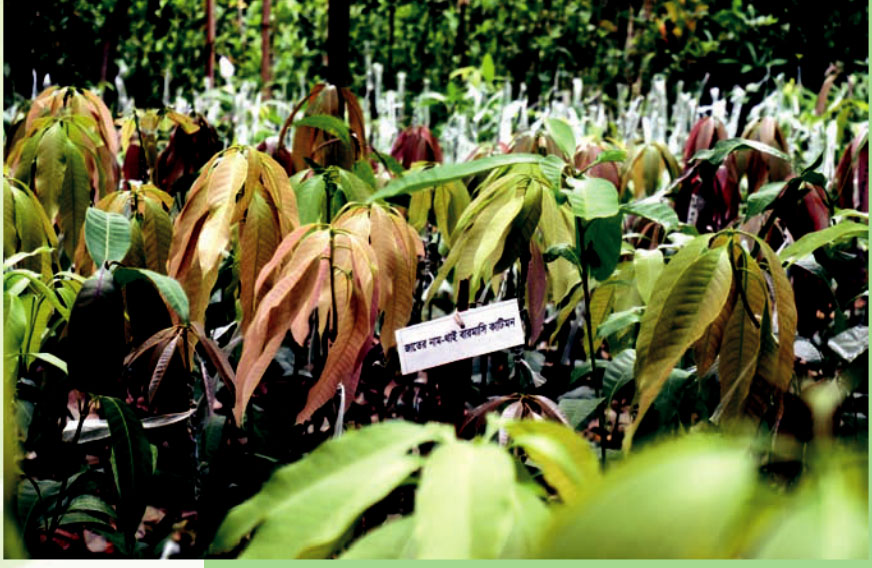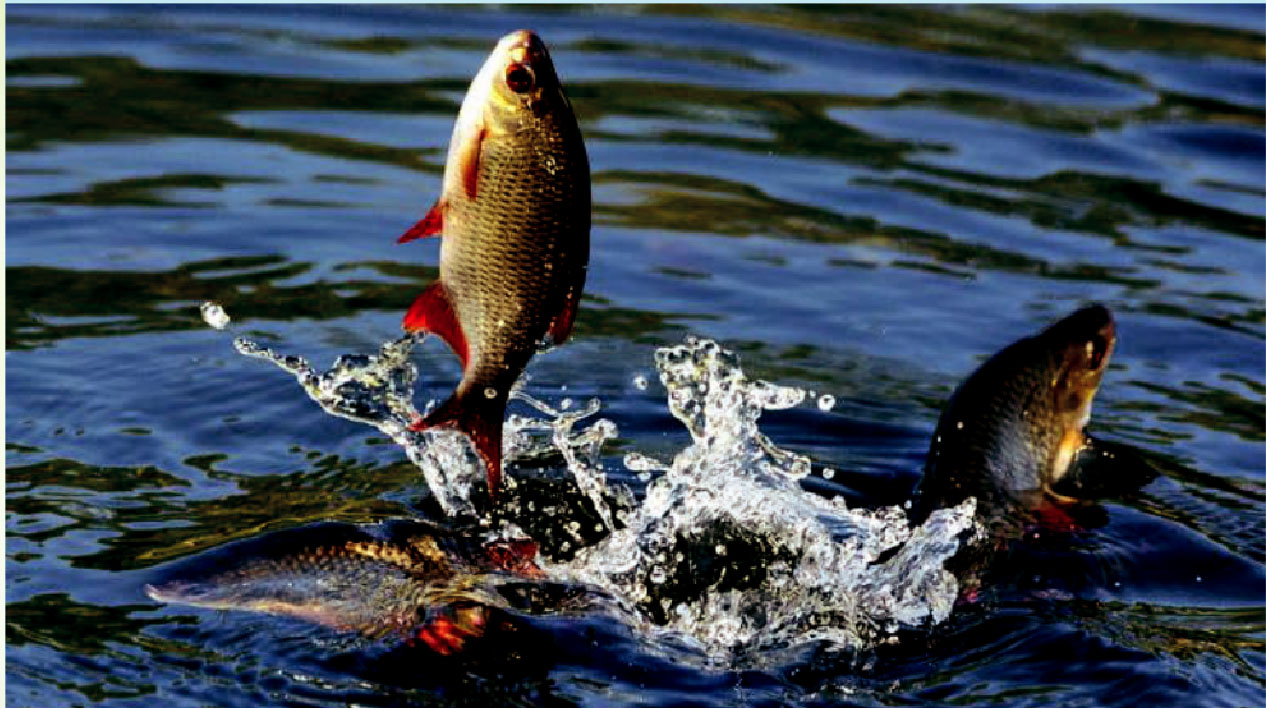Agriculture, Livestock & Fisheries
Agriculture, livestock and fisheries are the major areas of income generating activities of IDF group members. Chattogram Hill Tracts has immense potentials in these sectors. IDF has been giving special focus on these areas since its inception. IDF initiated integrated agriculture with the assistance of Sida in 1996 and then HKI in 1998 on home-gardening, nutrition, fruit gardening and local poultry raising. IDF later created a separate Unit on agriculture, livestock and fisheries that has been continuing the activities on the sector. Since 2014, PKSF has been supporting, both technically as well as financially, in the program in its extension works in providing training, in extending new technologies and in marketing of agricultural produces. The progress of major activities done by the Unit during the year 2020 is described below.
Agriculture :
The major activities carried out in the field of agriculture consisted of 4 major areas. These were i) extension of technologies through demonstrations, ii) organizing training programs and field days etc. iii) distribution of inputs/materials and d) publicity/publications. In addition, IDF developed 2 Nurseries that are being maintained over the years. The specific activities carried out during the year were:
| Central Nursery | – | 1 |
| Office Nursery | – | 2 |
| Village Model Farm | – | 185 |
| Home gardening | – | 426 |


a) Demonstration
During the reporting year, about 9 different types of demonstrations on various crops were organized within the areas of 6 different IDF branches. The purposes of these demonstrations were to introduce new crops and new technologies among the farmers. About 89 farmers were involved in organizing these demonstrations in these areas. For details of the technologies, crops and areas where demonstrations were organized,
b) Training
- Two training programs were organized where 50 farmers attended as participants.
- Consultation centers on crop production were organized in 2 villages where 90 farmers took part in discussions.
- Upazila Coordination and Planning meetings were held in 2 Upazilas.
c) Distribution of Inputs/materials
- Pheromone lures were distributed to 390 farmers, and
- Seeds of various vegetables were distributed to 40 vegetable growers.


C) Maintenance of Nurseries:
In addition, the agriculture Unit had been supervising the activities of one Central Nursery at Matiranga, Khagrachari and another at Balaghata, Bandarban. The staff members had assisted to establish 130 nurseries at the members’ level and had assisted in developing 760 model home gardens. Moreover, they helped members in developing 5107 home gardens. These nurseries and gardens were being supervised and necessary assistances were provided to the members during the year.
Livestock Services:
The activities carried out in the field of livestock production and services consisted of i) organizing demonstration farms at the field level, ii) providing training to farmers and iii) distri-bution of livestock related inputs and materials and iv) publicity/publications. The specific activities carried out are:
a) Demonstration Farms
- Organized 9 demonstration farms on rearing cows by following the better management system in 9 villages.
- Organized 3 poultry farms for rearing hybrid broilers/sonali poultry farms.
- Five poultry farms of local varieties in safe poultry sheds were organized.
- Established 11 Buck Centers and supervised their maintenance
- Developed 20 duck farms (pekin varieties) for production of meat and eggs in farmers’ field.
- Three farmers were selected to develop Turkey farms in semi-slated method as demonstration farms.

b) Training
-One training program was organized for farmers of poultry bird rearers of sonali varieties of poultry.
-World Egg Day was observed in a village where benefits of production and consumption of eggs were discussed.
Fisheries:
The activities carried out during the year 2020 in the field of fisheries could be categorized into 4 areas: i) demonstration, ii) training, iii) supply of inputs/materials and iv) publication/-publicity. The followings are the details.
a) Demonstration Farms
- Six demonstrations farm of mixed cultivation of carp/mola/tilapia were done in 6 ponds of 6 farmers. These farmers were selected from six branches; Cox’s Bazar (1groups), Baishari (1 group) of Bandarban, Betbunia (1 groups) of Rangamati, Rajarhat (1 groups) of Chattogram, Banshkhali (1 groups) of Chattogram, Sarkarhat (1 groups) of Chattogram and Amcharhat (1 group) of Chattogram.
- Mixed cultivation of carp-prawn demonstration farms was organized in 10 ponds of 10 farmers. These were in Cox’s Bazar area in villages of Kathaliamura (3), Sonkhola (1) and North Baishari (2) villages and other Branches.
- Demonstration farms with local varieties of shing/magur/pabda/gulsha/carp were done in 11 villages with 11 farmers to demonstrate high yields of local fishes. The areas covered were the branches of Sarkarhat (3) in Chattogram, Betbunia (2) in Rangamati, Cox’s Bazar (3) and Baishari (3) in Bandarban.
- For increased production of carp varieties of fishes, 17 demonstration plots were organized with 17 farmers at different villages under the branches of Sarkarhat (5) in Chattogram, Betbunia branch (2) in Rangamati, Rajarhat (5) in Chattogram and Banshkhali (5) in Chattogram.
- Eleven demonstration Farms were tried on mixed cultivation of high value chitol/ aieer/shoul fishes in 8 villages of Kathaliamura, Chonkhola and Jhilongja in Cox’s Bazar and other branches.

6. Nine demonstration farms were done with 9 farmers on vetki/parshe/caro/tilapia cultivation in six villages under the braches of Sarkarhat (3), Amcharhat (3) and Cox’s Bazar (3).
7. For developing entrepreneurs in nursery ponds for producing fish fingerlings, one demonstration farms were established with one farmer. These were done in different villages under the branch of Banshkhali.
8. Cultivation of local varieties of fishes, that are on the way of being extinct, was done in 9 ponds in Betbunia of Rangamati and other branches.
9. For developing entrepreneurs in Fish Feed Mill for producing fish feed, One demonstration farm was established with One farmers. These were done in one village under the branches of Banshkhali.
10. Six demonstration farms were done with 6 farmers on Tank/Biofloc fish cultivation in six villages under the braches of Sarkarhat (1), Amcharhat(2) and Cox’s Bazar

b) Training:
A total of 3 non-residential training programs were organized for the fish cultivators. One training program was conducted in Cox’s Bazar area, 1 in Banshkhali and 1 in Amchorhat. In each program, 25 farmers took part in the training and thus a total of 75 farmers attended the 3 training programs. In these training programs District Fisheries Officer, Upazilla Fisheries Officer, Scientific Officer of Bangladesh Fisheries Research Institute (BFRI) and others took part as speakers.
C) Supply of inputs/materials publication/publicity
The Kit Box supplied to the Fisheries Development Officer containing DO meter, PH meter, Water thermometer, Shaky disk, Ammonia test kit, Refractometer, weighing balance and Apparatus carrying bag wais being used during the year for identifying problems and providing solutions for fish farming.
D) Publication/publicity
- One Billboard was prepared and hung on the roadside. The billboard contains the facts on ‘general problems in fish cultivation and possible solutions.
- One Folder was also published under the Fisheries Unit.

